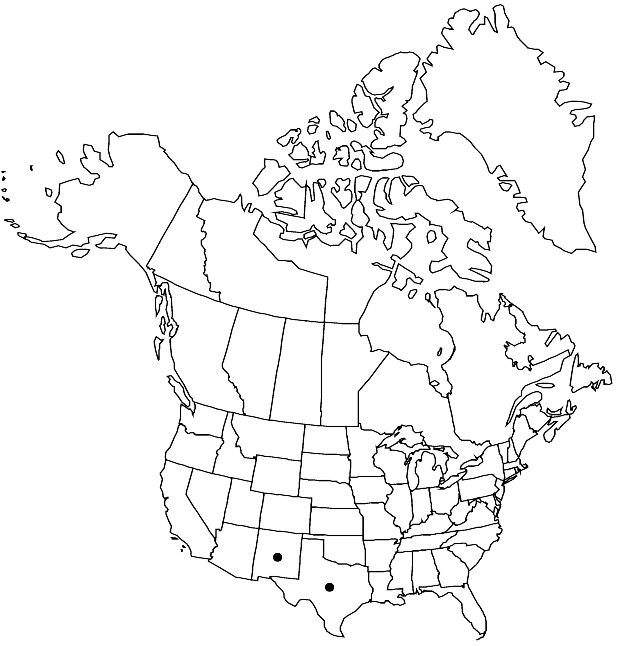Boechera porphyrea
Harvard Pap. Bot. 11: 272. 2007.
Perennials; usually long-lived; apomictic; caudex often woody. Stems 1 to several per caudex branch, arising from center of rosette or arising laterally proximal to sterile shoots, somewhat elevated on woody base or from ground surface, 2–5(–9) dm, usually glabrous proximally, rarely sparsely pubescent, trichomes simple and short-stalked, 2- or 3-rayed, 0.1–0.5 mm, glabrous distally. Basal leaves: blade oblanceolate, (3–)5–15 mm wide, margins dentate, ciliate at least along petiole, trichomes to 1 mm, surfaces pubescent, trichomes short-stalked, 2–6-rayed, 0.1–0.5 mm. Cauline leaves: 5–17(–21), sometimes concealing stem proximally; blade auricles 0.5–3.5(–5.5) mm, surfaces of distalmost leaves glabrous. Racemes 10–30(–70)-flowered, usually unbranched. Fruiting pedicels horizontal, gently curved downward, 10–27 mm, glabrous. Flowers ascending at anthesis; sepals glabrous; petals lavender, 6.5–8.5 × 1–2.5 mm, glabrous; pollen spheroid. Fruits widely pendent, not appressed to rachis, not secund, usually curved, edges parallel, 3–7 cm × 1.8–2.5 mm; valves glabrous; ovules 100–160 per ovary; style 0.2–0.5 mm. Seeds sub-biseriate, 1.1–1.6 × 0.9–1.1 mm; wing continuous, 0.1–0.2 mm wide.
Phenology: Flowering late Mar-early May.
Habitat: Rocky slopes in evergreen woodlands or desert scrub
Elevation: 1200-2100 m
Discussion
Morphological evidence suggests that Boechera porphyrea is an apomictic species that arose through hybridization between B. texana and B. perennans (see M. D. Windham and I. A. Al-Shehbaz 2007 for detailed comparison).
Selected References
None.
